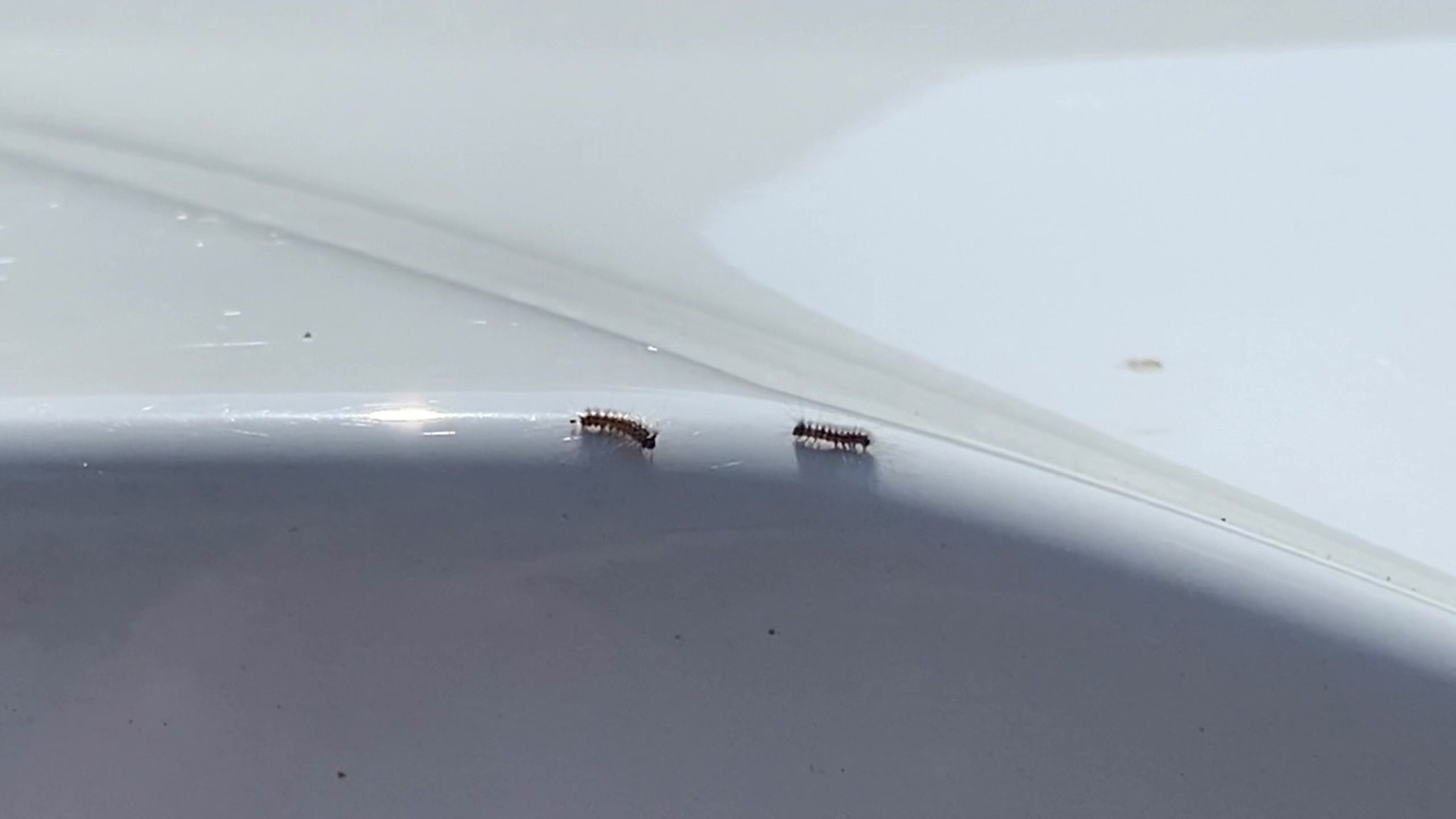PENNSYLVANIA, USA — If you have seen these tiny insects all over your yard, in your trees, and in the park, you're not alone. Spongy moths, formerly known as gypsy moths, are all over parts of central Pennsylvania. They recently hatched and are looking for leaves to feed on.
"They'll create silks and get carried around by the wind, so if you're walking outside and all of a sudden you have some on you, they've been flying on their silk through the wind and might get attached to you or other things," said Anna Hodgson, Penn State Extension agronomy educator.
Hodgson says the spongy moth is an invasive species. During the caterpillar stage of its life, it will devour almost all greenery in sight.
"They can defoliate trees, which, if we stress out our trees too much, can lead to the death of trees," Hodgson said.
According to the Department of Conservation and Natural Resources, spongy moths defoliated more than 441,000 acres in Pennsylvania last year. This year, DCNR will spray insecticide across more than 227,000 acres of forest, including portions of Union, Lycoming, and Clinton Counties.
Hodgson says homeowners can do tree-banding to suppress spongy moths. Tie burlap around the middle of your trees, about chest height.
"You can check that periodically to remove the caterpillars or to kill the caterpillars. You could also try sticky bands, so they actually get stuck to it when they walk up the tree to get to the foliage," Hodgson said.
If you handle them, wear gloves. You could get a reaction like hives or a red, itchy rash. Hodgson says the caterpillars will be around for the next seven weeks or so, and then they become moths.

